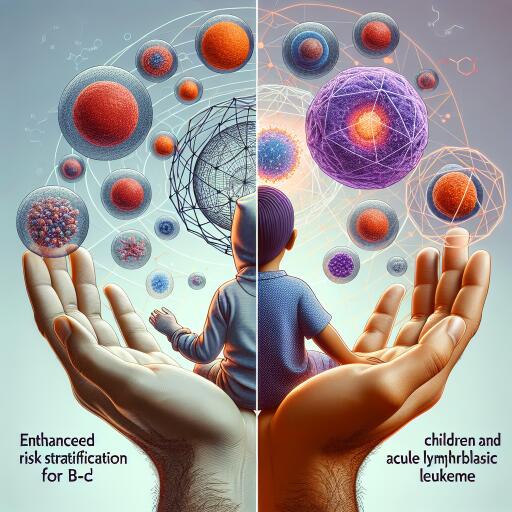Unlocking New Vistas in Childhood Leukemia: A Landmark Children’s Oncology Group Study
B-Cell Acute Lymphoblastic Leukemia (B-ALL) is a formidable adversary in children and young adults, representing one of the most common types of cancer in this demographic. The Children’s Oncology Group (COG) has been at the forefront of this battle, relentlessly pursuing more precise ways to predict outcomes and tailor treatments. A recent report, stemming from an exhaustive study involving over 20,000 participants, heralds a significant leap forward in our approach to this disease.
The study set out to test the robustness of the Predictive Index UK All (PIUKALL) when applied to a large cohort from COG trials, focusing specifically on non-infant B-ALL patients. Leveraging the COG’s unique infrastructure, which conducts separate trials for B- and T-ALL, the study concentrated on the more prevalent B-ALL, unveiling a novel risk score named PICOG and exploring its predictive prowess.
Encompassing a substantial patient cohort spanning from 2004 to 2019, the researchers meticulously reviewed outcomes for 13,875 standard-risk and 7,324 high-risk patients. These individuals, enrolled in definitive trials, epitomize a decade and a half of collective hope and determination against B-ALL. The comprehensive consent process and stringent adherence to ethical guidelines underpin the robustness and ethical integrity of the investigation.
The Science of Prediction
Prediction models in clinical research are critical tools but constructing them necessitates a judicious selection of variables. In this groundbreaking work, predictors were chosen not out of convenience but through a rigorous process grounded in domain expertise, thus sidestepping the pitfalls of less robust methods.
The study reaffirmed the prognostic significance of specific genetic markers and incorporated modern techniques to measure Minimal Residual Disease (MRD) at different stages, recognizing its critical role in assessing treatment response.
Validation, Calibration, and Beyond
Validation of the PI model against COG data did not merely confirm its utility but also flagged nuances in predictive accuracy – a testament to the study’s nuance and depth. Furthermore, the inclusion of MRD, both at an early stage (D8) and later (D29), underscored COG’s innovative approach to risk assessment.
The advent of the PICOG brings forth a more nuanced stratification method for B-ALL patients, one that holds promise in refining therapeutic choices and fundamentally altering the trajectory of care. This model, emerging from an intricate web of data and analysis, was rigorously tested against existing models, employing modern statistical tools to ensure its validity and strength.
A Glimpse into the Future
The study’s implications extend far beyond its immediate findings. By harnessing a vast dataset and employing cutting-edge analysis, it paves the way for more personalized medicine in B-ALL treatment, where decisions can be tailored to the individual genetic and disease markers of each patient.
Indeed, the subsequent step in this scientific odyssey involves comparing the model’s performance with that of machine learning techniques, exploring whether these advanced computational methods can offer even sharper predictive accuracy.
As the study elegantly demonstrates, the marriage of comprehensive clinical data with sophisticated analysis techniques harbors the potential to revolutionize our approach to childhood leukemia. As we stand on the cusp of this new era, the COG’s work offers not just hope, but a concrete path forward towards more effective, individualized care.
In the relentless quest for cures, knowledge is power. This study not only enriches our understanding but also provides tangible tools to combat one of childhood’s most daunting foes, marking a pivotal moment in the ongoing battle against B-ALL.
All analyses and findings from this monumental effort are meticulously documented and made available, offering a treasure trove for researchers, clinicians, and statisticians alike to further refine and develop even more effective interventions for children and young adults facing B-ALL.
With this study, the COG reiterates its commitment to advancing pediatric oncology, ensuring that each child diagnosed with B-ALL has the best possible shot at a healthy future. This is not just research; it’s a beacon of hope for countless families navigating the stormy seas of childhood leukemia.









